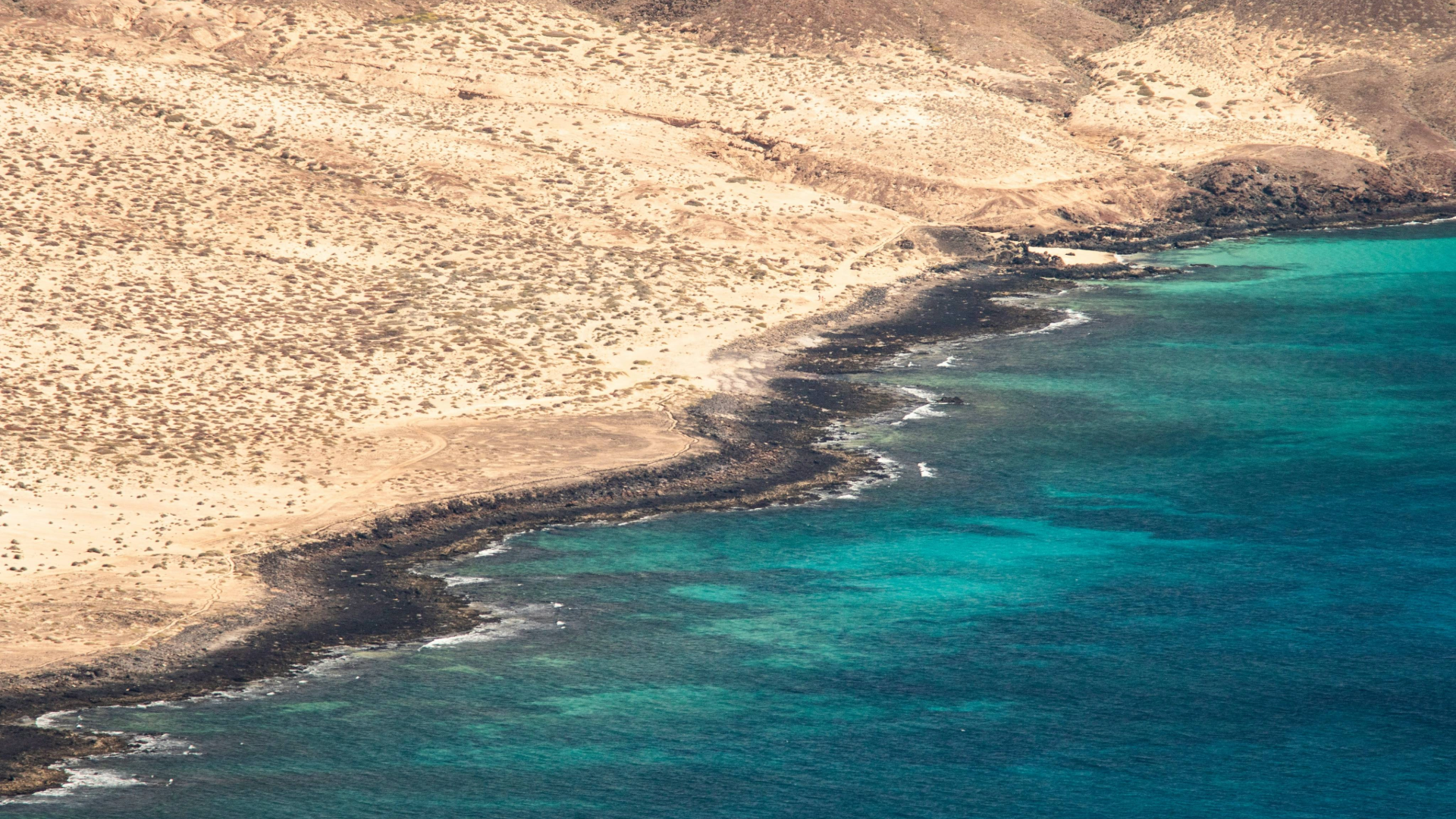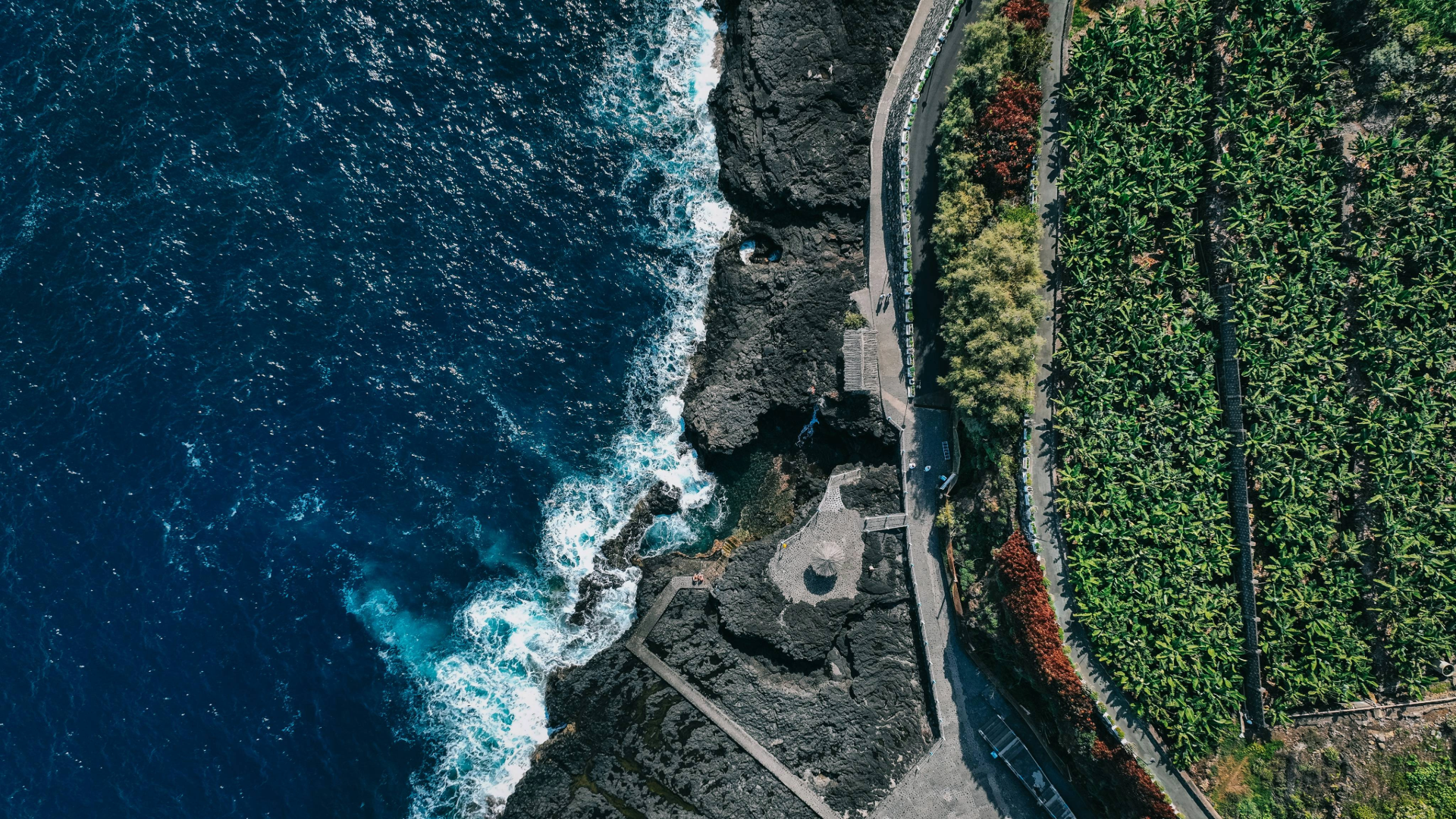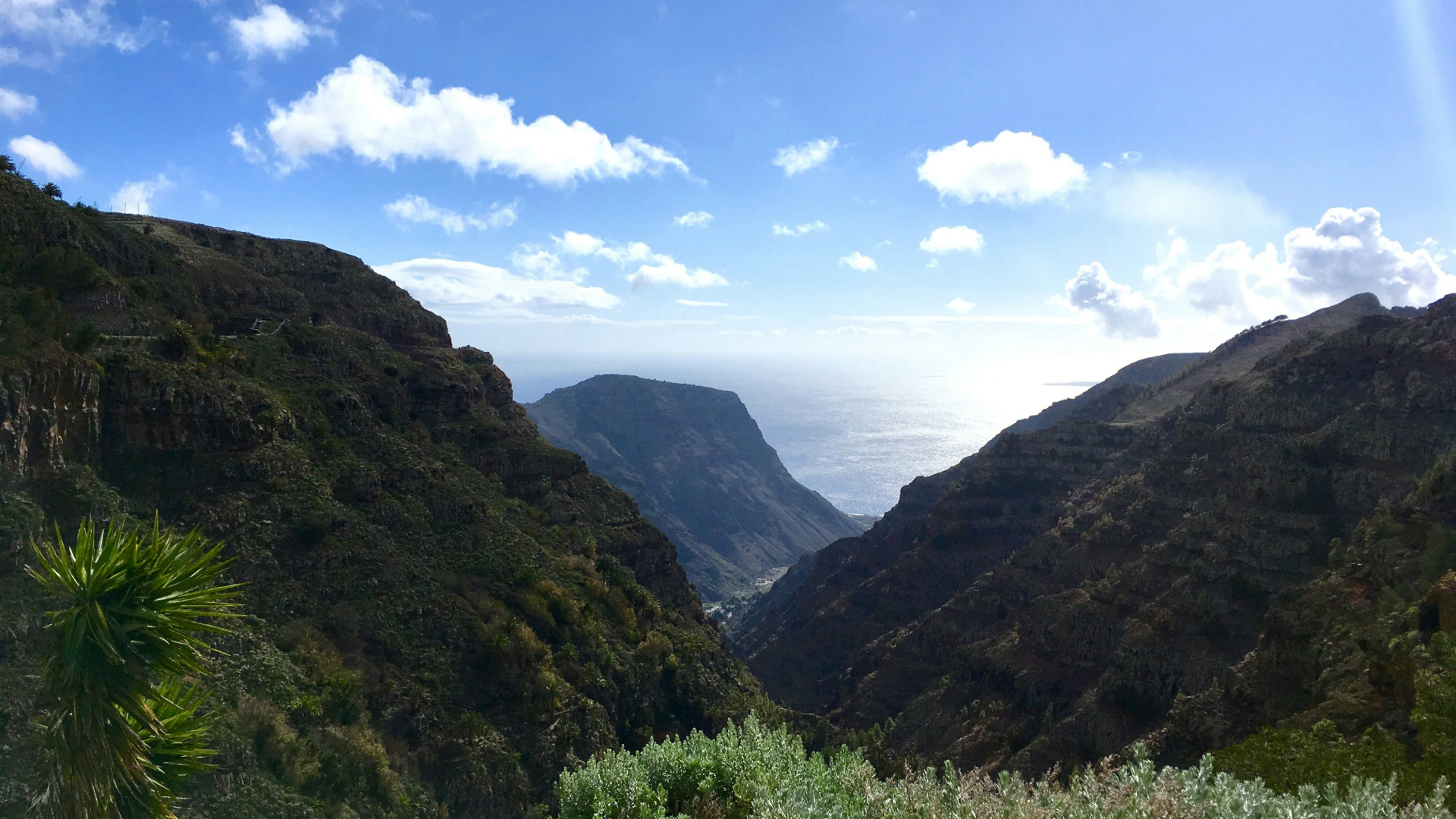Sometimes, a place just comes to us. For Héléna, this place appeared at a very young age. This blog retraces an adventure that began with a simple phrase spoken 16 years ago, and eventually led her to La Gomera, an island that seemed to have been calling her all her life.
The beginning of a dream
From an early age, Héléna showed a deep interest in the world around her. Quiet and introspective, she spent a lot of time observing and experiencing life in her own way. She spoke little, but her every word had a profound meaning, far beyond what one would expect from a child her age.
On a family holiday to Fuerteventura, one of the Canary Islands, Héléna expressed an unexpected but heartfelt desire: “This is where I want to live.” She was only four years old, but her words betrayed a special connection with this place. That moment marked the beginning of a dream that would accompany her throughout her life.
Time passes, but dreams persist
As the years went by, life took its course, but Héléna never forgot her dream. She grew up and explored new horizons. At the age of 20, after completing her studies, the desire to reconnect with the feeling she had as a child became more pressing.
Before finding her true home on La Gomera, Héléna explored several other islands in the archipelago, starting with Tenerife, and then looking out over La Gomera. A much less touristy island. She went there a few months later and loved her 3-week stay. To find her future place of residence, she also visited Gran Canaria and Lanzarote, but La Gomera remained the island that best suited her idea of her new life.
Finally, it was in La Gomera that she decided to settle down, no longer as a tourist, but as a new inhabitant, ready to start a project that was close to her heart: developing a small hotel or Airbnb to welcome travelers, share with them the beauty of the island and offer them a space where they could recharge their batteries with nature and ecology as a priority.
The Canary Islands: an archipelago with many faces
The Canary Islands are an archipelago off the northwest coast of Africa, made up of eight main islands: Tenerife, Fuerteventura, Gran Canaria, Lanzarote, La Palma, La Gomera, El Hierro and La Graciosa. Each island has its own character and culture, and offers visitors a unique experience.
-
Tenerife
The largest island is often the most popular with tourists, famous for its Mount Teide, Spain’s highest peak, and its black sand beaches. With a surface area of 2,034 km² and a population of around 950,000, it is the economic and cultural heart of the archipelago. Tenerife is also renowned for its natural parks and exceptional biodiversity.
-
Fuerteventura
The second-largest island, with a surface area of 1,659 km², is known for its spectacular beaches and desert landscapes. It has a population of around 120,000. Although popular with water sports enthusiasts, Fuerteventura retains a calm and tranquil atmosphere, ideal for those looking to escape the hustle and bustle.
-
Gran Canaria
It is often referred to as a “continent in miniature” due to the diversity of its landscapes, ranging from golden beaches to verdant mountains. With a population of almost 850,000 and a surface area of 1,560 km², it combines highly developed tourist areas with unspoilt natural spaces.
-
Lanzarote
is famous for its volcanic landscapes, shaped by the eruptions that have marked its history. With a surface area of 845 km² and a population of around 150,000, the island stands out for its unique architecture, influenced by the artist César Manrique, who harmoniously integrated art and nature.
-
La Palma
also known as “La Isla Bonita”, is the greenest of the Canary Islands. Covering an area of 708 km², it is home to around 85,000 inhabitants. La Palma is a paradise for hikers, with its laurel forests, waterfalls and mountainous landscapes.
-
La Gomera
With a surface area of 369 km² and a population of around 22,000, it is one of the most peaceful and unspoilt islands in the archipelago. Its Garajonay National Park, a UNESCO World Heritage site, is home to a subtropical laurel forest, a remnant of the Tertiary era. Unlike the larger islands, La Gomera is largely untouched by mass tourism, offering an authentic and soothing experience.
-
El Hierro
The smallest of the main islands, at just 268 km², has a population of around 10,000. It is renowned for its commitment to renewable energies, and its wild, isolated atmosphere attracts those seeking tranquillity.
-
La Graciosa
The smallest and most recently inhabited of the Canary Islands, La Graciosa is just 29 km² in size and home to around 700 inhabitants. Accessible only by ferry from Lanzarote, La Graciosa is a place where time seems to stand still, with pristine beaches and a simple lifestyle. It is often counted as part of Lanzarote.
A new start on La Gomera
It’s in La Gomera, with its wild landscapes, lush forests and peaceful atmosphere, that Héléna has decided to make this new start. Every day, she immerses herself a little more in the local culture, learns the language with passion, and carefully plans every step of her project.
This island, less touristy than its neighbors, offers an exceptional quality of life. The inhabitants of La Gomera live in harmony with nature, with a slower, more serene pace of life. It’s this simplicity and authenticity that appealed to Héléna, and which is attracting more and more visitors in search of tranquillity.
Practical information for travellers
If, like Héléna, you’re dreaming of discovering La Gomera, here are some practical tips for getting there from Switzerland.
From Switzerland to La Gomera
To reach La Gomera, you first need to fly to Tenerife Sud, the closest island to La Gomera with an international airport. From Switzerland, you have several options. You can fly from Basel or Geneva airport with EasyJet, or from Zurich with Swiss or Edelweiss. The flight takes around four and a half hours.
On arrival in Tenerife South
Once you’ve arrived at Tenerife South airport, you have several options for getting to La Gomera. If you’ve rented a car, it’s advisable to pick it up at the airport. This will enable you to transport your luggage comfortably and get to the port of Los Cristianos, around 15-20 minutes away. It’s important to note that not all car rental companies allow you to cross between islands. Only CICAR, a local company, allows crossings from Tenerife to La Gomera. CICAR is reputed to be a relatively expensive option, charging around 35 euros per day for car rental. This rate is similar on the island of La Gomera, where other local agencies charge comparable prices. However, choosing CICAR can offer greater flexibility if you plan to travel between islands with your rental car.
Take the ferry to La Gomera
At the port of Los Cristianos, you can buy your tickets for the crossing to La Gomera online or directly at the ticket office. Two main companies serve the island: Naviera Armas and Fred Olsen Express. The crossing takes around 50 minutes and costs around 100 euros for two people with a car, or around 30 euros for one person without a car. Residents of the Canary Islands benefit from substantial discounts, reducing the fare to just 10 euros per person.
If you don’t rent a car, on arrival in Tenerife Sud, leave the airport and follow the signs for cabs. Ask the driver to take you to the port of Los Cristianos, a journey that costs around 30 euros. Once at the port, buy your ferry ticket (approx. 30 euros per adult) and wait in the port hall. Your luggage will be taken care of free of charge, allowing you to board the boat with the other passengers, unencumbered by your suitcases.
On board the ferry
Once on board the ferry, you’ll find snacks to refresh you during the crossing. Although the sea can be a little rough at times, the crossing is relatively short, lasting just 50 minutes. The ferry is a fast and convenient way to reach La Gomera, while offering beautiful views of the ocean and surrounding islands. It’s a chance to relax before arriving at your destination, with the excitement of discovering the magnificent scenery that awaits you on the other side.
On arrival in La Gomera
Once you’ve arrived at the port of San Sebastián de La Gomera, the island’s capital, you have several options for reaching your final destination. If you have a car, you can head straight for the road. La Gomera’s roads are in excellent condition, but they are winding and can be demanding for drivers not used to mountain roads.
If you prefer to use public transport, buses are also available to take you around the island. You can consult the timetables on the official La Gomera transport website. Buses are a convenient and affordable option, 5 euros from San Sebastian to Valle Gran Rey to explore the island without having to worry about driving on winding roads.
If you don’t have a car, take a cab to your destination. For example, a trip from San Sebastián to Valle Gran Rey, one of the island’s popular tourist destinations, costs around 75 euros. Alternatively, you can choose to spend a night in Tenerife before taking the ferry, depending on the time of your arrival flight.
There’s another, much smaller Fred Olsen boat that stops at san sebastian, playa santiago and Valle Gran rey. There are several boats a day, costing 20 euros from san sebastian to Valle Gran rey.
Conclusion
Héléna’s journey from Fuerteventura to La Gomera is a story of perseverance and passion. Her project is still a work in progress, but the foundations have been laid to transform her childhood dream into a reality firmly rooted on this magical island. This adventure has only just begun, and La Gomera, with all it has to offer, seems the perfect place to make this dream a reality.










